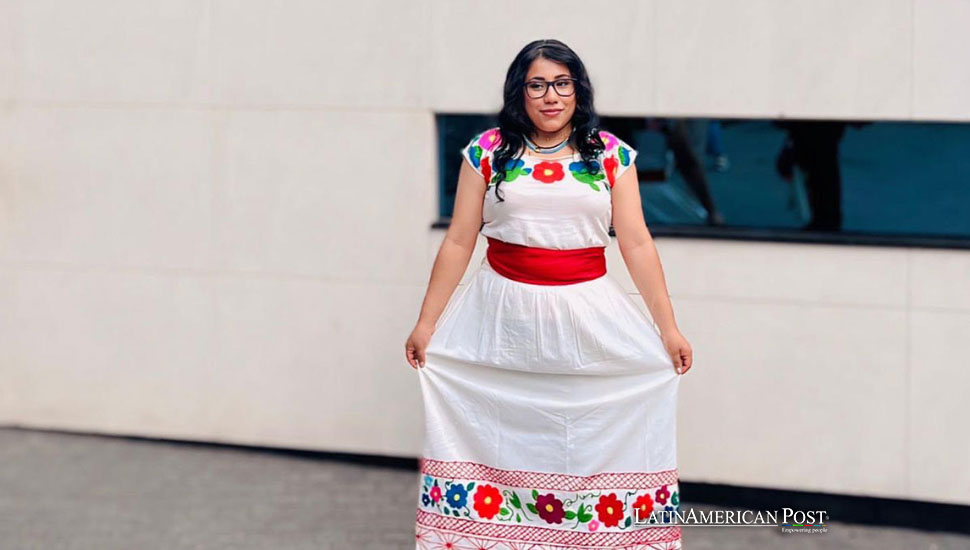Mexican Indigenous Programmer Revives Nahuatl Language Through Google Technology

Gabriela Salas, an indigenous programmer from Mexico, collaborates with Google to integrate Nahuatl into Google Translate, highlighting the importance of cultural preservation. This achievement is a personal success and a significant milestone for indigenous communities.
Gabriela Salas, a proud indigenous Nahua programmer and data scientist from Chapulhuacán, Hidalgo, Mexico, has embarked on a mission to rescue and revitalize indigenous languages through the power of technology. Her recent collaboration with Google to include Nahuatl, Mexico’s principal indigenous language, in Google Translate marks a significant step in this journey. In an interview with EFE, Salas emphasized the importance of preserving cultural roots through digital means.
Salas’s journey into the field of indigenous languages began well before she collaborated with the tech giant. As a scientific communicator, she often highlighted the critical role of artificial intelligence in preserving these languages. Her interest in collaborating with Google was piqued when she learned that the company sought volunteers for their translation system. This June, Google announced the addition of 111 new languages to their translation service, including Nahuatl, bringing the total number of supported languages to over a hundred.
Salas diligently provided Google with comprehensive data she had gathered, including documentaries, recordings of people speaking Nahuatl, and various written materials like books, magazines, and newspapers. According to the Sistema de Información Cultural (SIC), Nahuatl belongs to the Yuto-Nahua family and the Cora-Nahua group, currently spoken by 1,586,884 people. Salas shared that the integration of Nahuatl into Google Translate went viral, encouraging her to consider working on preserving other indigenous languages in Mexico, which total 68. However, Google has not yet opened any new calls to add more languages to their translator.
A Collective Victory for Indigenous Communities
At 28, Salas is immensely proud of her work. She sees the inclusion of Nahuatl in Google Translate as a triumph not only for herself but for all Mexicans, especially indigenous communities. She expressed concerns over persistent discrimination against indigenous populations, particularly women who are often expected to marry at a young age. Salas sought to break this cycle, aspiring to become a scientist and programmer, goals she has proudly achieved.
Her success is a beacon of hope and inspiration, particularly for Indigenous girls and women in science. As a member of the Organization for Women in Science for the Developing World (OWSD) of UNESCO, Salas is committed to promoting STEM fields among indigenous populations. She stresses that the biggest challenge for Indigenous communities and their languages is ensuring that technology reaches every corner of society, making it accessible to all.
Salas underscores the importance of widespread dissemination of indigenous languages, noting that more information leads to more accurate translations. She encourages older Nahuatl speakers, whom she calls the “pure essence” of the language, to participate in these initiatives. She also urges companies to consider the diverse array of indigenous languages in Mexico in their projects.
Overcoming Barriers and Inspiring Change
Salas’s journey has been fraught with challenges. She often faces double the obstacles to achieving her goals. However, her unwavering determination and dreams have always propelled her forward. She views her achievements as paving the way for others, especially the youth, to follow their dreams and reach their full potential.
The collaboration between Salas and Google is not just about technology but cultural preservation and recognition. By integrating Nahuatl into a widely used platform like Google Translate, Salas has helped bridge a significant gap, making the language accessible to a global audience. This move also encourages the younger generation to take pride in their linguistic heritage and promotes a sense of cultural continuity.
Salas’s work is part of a broader movement across Latin America to preserve and promote indigenous languages. Many indigenous languages across the region are at risk of extinction due to various factors, including globalization, urbanization, and the dominance of Spanish and Portuguese. Efforts like Salas’s are crucial in combating these trends and ensuring that indigenous languages and cultures are not only preserved but also thrive in the digital age.
Similar initiatives are underway in countries like Peru, Bolivia, and Guatemala to integrate indigenous languages into modern technology platforms. Governments and non-profit organizations increasingly recognize the importance of linguistic diversity and invest in projects supporting language preservation. These efforts are vital in maintaining cultural diversity and fostering a sense of identity among indigenous populations.
The integration of indigenous languages into technology also has significant social implications. It promotes inclusivity and ensures that Indigenous people can fully participate in the digital economy. For instance, in regions where tourism is a considerable industry, having indigenous languages on digital platforms can enhance the cultural experience for visitors and provide economic benefits for local communities.
The Future of Indigenous Languages in Technology
Looking ahead, Salas hopes to continue her work in preserving indigenous languages and expanding their presence in the digital world. She believes technology can be a powerful tool in bridging cultural gaps and ensuring that Indigenous languages are not lost to future generations. Her vision includes developing more comprehensive databases for indigenous languages, creating educational resources, and encouraging using these languages in everyday digital communication.
Salas’s collaboration with Google is a testament to the potential of technology in cultural preservation. It also highlights the importance of community involvement and the need for more initiatives that support linguistic diversity. By working together, communities, tech companies, and governments can create a more inclusive digital world where all languages and cultures are valued and preserved.
Her work also inspires other indigenous communities to take action and advocate for the preservation of their languages. It demonstrates that significant strides can be made in promoting linguistic and cultural heritage with determination and the right resources.
A Call to Preserve Cultural Heritage
Gabriela Salas’s story powerfully reminds us of the importance of preserving indigenous languages and cultures. Her collaboration with Google to integrate Nahuatl into Google Translate is a significant achievement that benefits the Nahua community and the broader global audience. It highlights the role of technology in cultural preservation and the need for continued efforts to support linguistic diversity.
As we move into the digital age, we must ensure that all cultures and languages are represented and preserved. Efforts like Salas’s are vital in this endeavor, serving as a beacon of hope and inspiration for others to follow. By embracing technology and fostering collaboration, we can create a more inclusive and culturally rich world where all voices are heard and valued.
Also read: Ancient DNA Study Sheds Light on Maya Sacrifices in Mexico’s Chichén Itzá
Salas’s journey is a testament to the power of determination and the importance of cultural heritage. It encourages us all to take action to preserve our cultural roots and support initiatives promoting linguistic diversity. Her work is a significant step towards a future where indigenous languages and cultures are preserved, celebrated, and integrated into the digital landscape.




